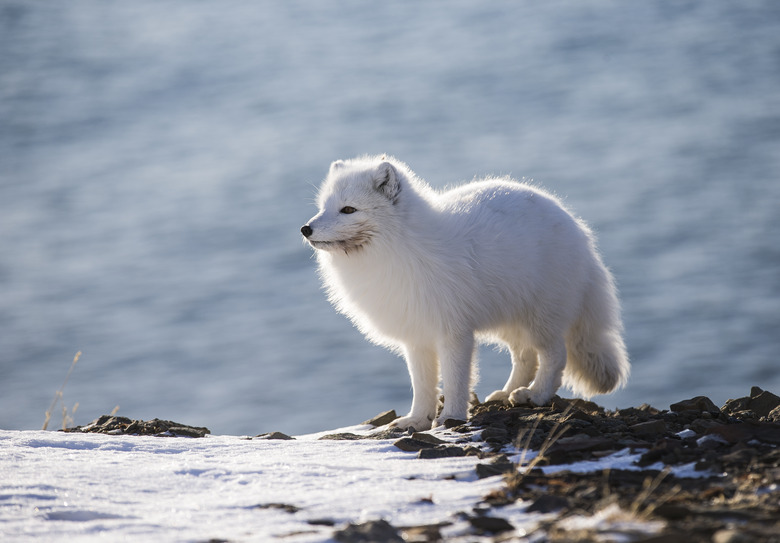What Foods Do Animals Eat In The Tundra?
One of the coldest biomes on the planet, the tundra is characterized by short growth seasons, low biodiversity and limited plant growth, according to the University of California Museum of Paleontology. The average winter temperature in the tundra is -30 Fahrenheit, while summers are considerably warmer at about 50 degrees Fahrenheit. Because the growing season only lasts about 50 to 60 days, animals living in the tundra have diets that vary seasonally. Many species have developed adaptations to allow them to survive the harsh winters when food is scarce.
Herbivores
Herbivores
There are many herbivorous mammal species that inhabit the tundra, including caribou, arctic hares, squirrels, elk, sheep and lemmings. Some species, such as elk, spend summers in the tundra, but migrate to warmer climates in the winter. Other species, including bighorn sheep and caribou, remain in the tundra year-round. In the summer months, herbivores eat shrubs, flowers, leaves and berries. Animals that live in the tundra year-round eat more during the summer to store up fat for the leaner winter months. Many herbivores have the ability to digest the lichen that grows on trees in the tundra. They eat this in the winter months, along with bark and any other vegetation they can find. In the spring, they eat buds and shoots or dig up roots.
Carnivores
Carnivores
Carnivore species living in the tundra include arctic foxes, brown bears, polar bears and grey wolves. These species feed on herbivores that are appropriately sized. For example, arctic foxes feed on lemmings, birds and carrion, Blue Planet Biomes states, while grey wolves, which are larger than foxes, hunt larger prey, including caribou, sheep and goats. Some of the carnivorous species of the tundra, including brown bears, will eat berries and eggs if meat sources are scarce. Several of these carnivorous species hibernate in the winter, which eliminates the need for food in the harsh winter months.
Birds
Birds
Many species of birds inhabit the tundra although some species migrate south for the winter months. Species range from loons, geese and puffins to eagles, owls and falcons. Some bird species feed on vegetation and insects. While vegetation is scarce in the winter, insects are available year-round. Other bird species are carnivorous and feed on small rodents, fish or other birds.
Aquatic Animals
Aquatic Animals
Aquatic species include polar bears, seals, whales, penguins, crabs and a wide range of fish. Some aquatic species migrate south during winter months, but many remain in the oceans surrounding the tundra providing a food source for other aquatic animals as well as terrestrial animals. Polar bears feed on fish, seals and penguins. Seals and penguins feed on fish.
Cite This Article
MLA
Powell, Jack. "What Foods Do Animals Eat In The Tundra?" sciencing.com, https://www.sciencing.com/foods-do-animals-eat-tundra-8561596/. 13 March 2018.
APA
Powell, Jack. (2018, March 13). What Foods Do Animals Eat In The Tundra?. sciencing.com. Retrieved from https://www.sciencing.com/foods-do-animals-eat-tundra-8561596/
Chicago
Powell, Jack. What Foods Do Animals Eat In The Tundra? last modified March 24, 2022. https://www.sciencing.com/foods-do-animals-eat-tundra-8561596/
